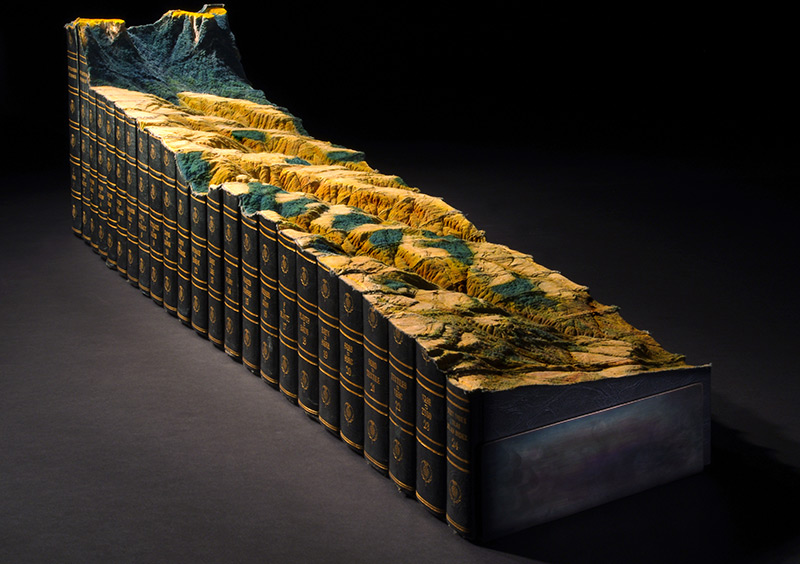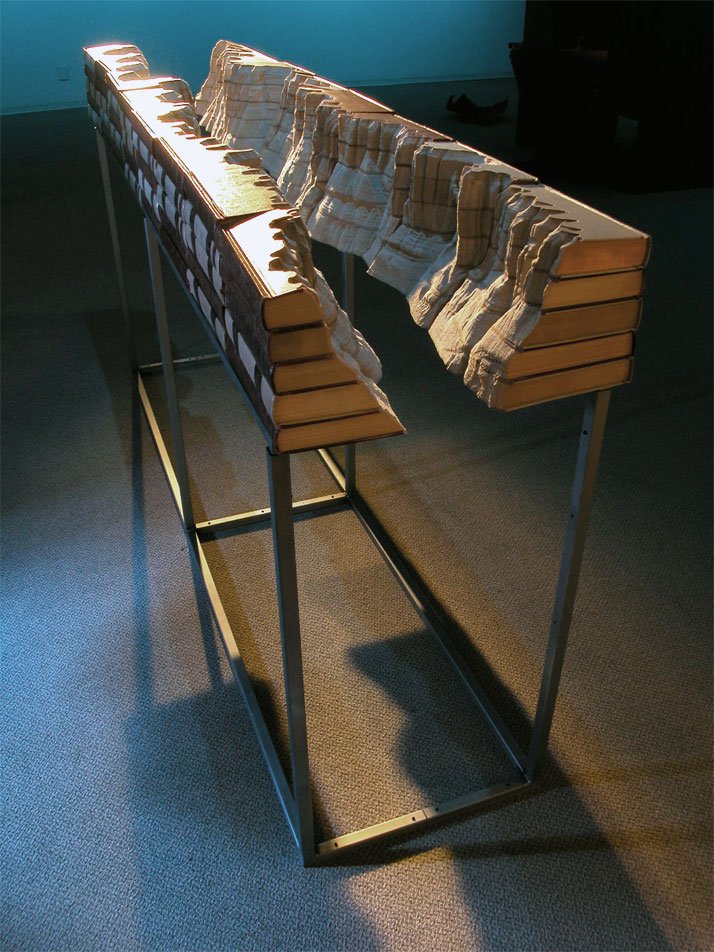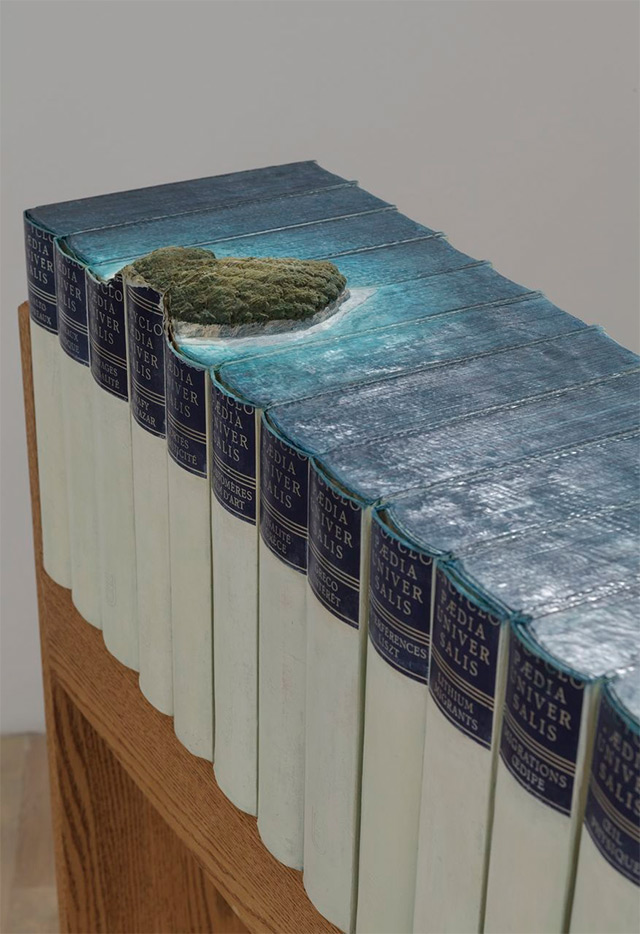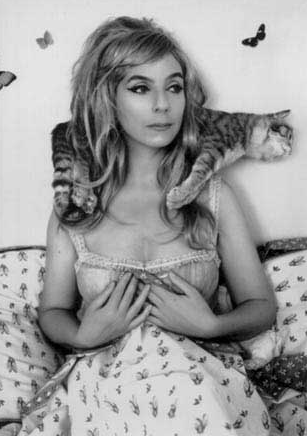For the better part of three decades multidisciplinary artist Guy Laramee has worked as a stage writer, director, composer, a fabricator of musical instruments, a singer, sculptor, painter and writer. Among his sculptural works are two incredible series of carved book landscapes and structures entitled Biblios and The Great Wall, where the dense pages of old books are excavated to reveal serene mountains, plateaus, and ancient structures. Of these works he says:
So I carve landscapes out of books and I paint Romantic landscapes. Mountains of disused knowledge return to what they really are: mountains.
They erode a bit more and they become hills. Then they flatten and become fields where apparently nothing is happening. Piles of obsolete encyclopedias return to that which does not need to say anything, that which simply IS. Fogs and clouds erase everything we know, everything we think we are.


In the course of his 30 years of practice, interdisciplinary artist Guy Laramée has created in such varied and numerous disciplines as theater writing and directing, contemporary music composition, musical instrument design and building, singing, video, scenography, sculpture, installation, painting, and literature.
He has received more than 30 arts grants and was awarded the Canada Council’s Joseph S. Stauffer award for musical composition. His work has been presented in United States, Belgium, France, Germany, Switzerland, Japan, and Latin America.

From 1984 to 1988 he composed music for contemporary dance: Daniel Soulière and Danse Cité, Carol Ip, Suzanne Lavoie, Andrew Harwood). After 1988 he composed and designed sound scenography for theater: (Larry Tremblay, 1987-88; Robert Lepage, 1992-93; Jean-Frédérique Messier, 1993-95; Volker Hesse, Switzerland, 1993); Lou Simard, Germany, 1994; Claire Gignac and La Nef, 1995-2004; Rachel Rosenthal, USA, 1999-2000. His research in non-tempered tunings and multiple layer polyrhythms led him to found TUYO in 1987, an ensemble performing microtonal and gestural music on invented instruments. He directed this ensemble until 1991.

ince 1986, he has authored several interdisciplinary works: Les Éléphants sont venus mourir ici, 1986; Théorie du Désert 1991; Marche de Nuit 1994-96, BIBLIOS 2005-6 and co-authored several multidisciplinary works (URNOS, 2004 ; Ici et là, 2004). He has written the scripts and directed the following short films: Marche de Nuit, with Henri-Louis Chalem, 1996; CrystalKey Bee, 1997).
He was the artistic director of PluraMuses, a company devoted to producing multi-disciplinary works and was also involved in the Meduse cooperative in Quebec City. He initiated and coordinated « L’espace traversé », a pan-Canadian conference on interdisciplinary art practices (See the bilingual book published by Le Sabord: L’Espace traversé).
Parallel to his artistic practice, he has pursued investigation in the field of anthropology. His fieldwork includes ethno-musicography of the Fetish ritual in Togo (1986), oracular imagination among healers in the Peruvian Amazon (1993-95), and concepts of creativity and imagination among contemporary artists (M.A. thesis, 2002). Ethnographic imagination is an important characteristic in his artistic work.
Although his work has been presented in museums and galleries (Marche de Nuit hosted by the Montreal Contemporary Art Museum, 94; « Quelle belle journée pour mourir ! », Méduse 1997), its appearance in the context of gallery exhibition is relatively new (2004). Nevertheless, at the end of 2011 his work will have been included in 15 solo and more than 20 collective shows. Half of these have been in international exhibits.





















